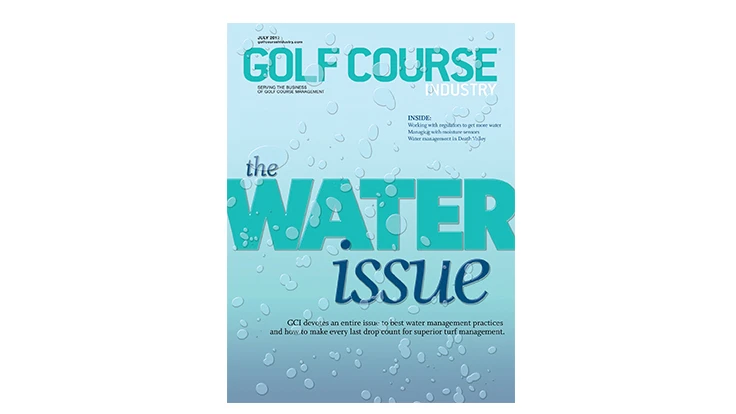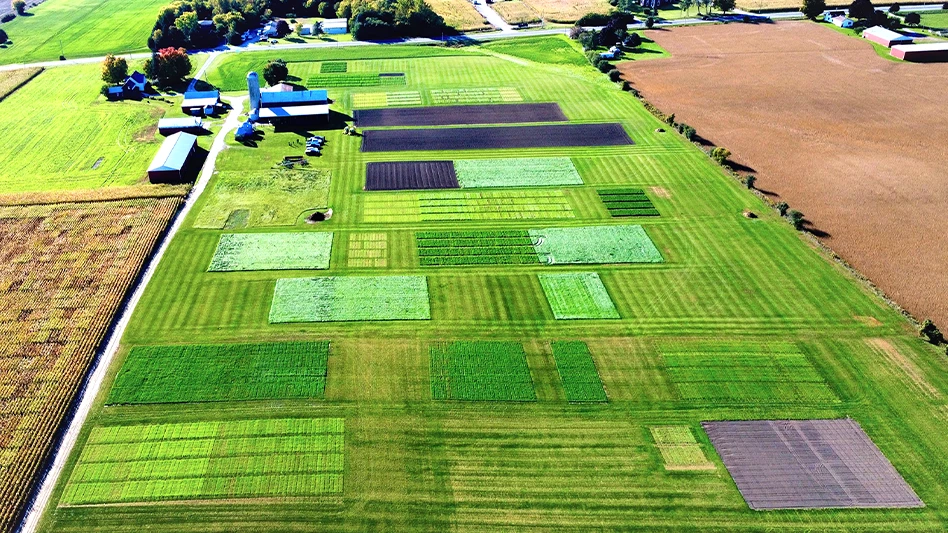
 We’re in the middle of a water crisis. Actually, the golf industry is in the middle of a thousand water crises from coast to coast – and that’s the good news, explains Charles Fishman, the author of “The Big Thirst,” which takes an engaging look at the challenges of smart water management today and into the future.
We’re in the middle of a water crisis. Actually, the golf industry is in the middle of a thousand water crises from coast to coast – and that’s the good news, explains Charles Fishman, the author of “The Big Thirst,” which takes an engaging look at the challenges of smart water management today and into the future.
“Whether its drought, bad water management or shifting water availability, many places in the country are having water problems that they’re not accustomed to having… If you run a golf course in Orlando, or Atlanta, or in Dallas, all of those places have serious water problems, but those are local water problems,” Fishman says. “That’s a good thing because local problems can be solved at the local level.”
And the good news, he adds, is that solutions exits – both from inside and outside the golf industry.
“There are some important things to keep in mind. One, there is a dawning era of water scarcity,” he says. “People who depend on water for their businesses are going to have to going to have to change how they think about water every day. There’s lots of transferable knowledge because lots of water problems have been solved by someone. But it’s important to understand the community where your facility exists and what’s available and possible in your community.”
As you worked on your book, what struck you as the most common misconception people have about water? The thing most people need to get comfortable with is that water can be reused. The easiest water we have and the most inexpensive water we have is the water that’s already been used once. There’s nothing wrong with cleaning that water and then using it to water an athletic field or golf course. All the water on earth is the same water. There’s no mechanism creating new water.
There is a hesitation to accept systems that clean and reuse water… and I believe that’s a mistake.
Another misconception is the idea that water should be so cheap that it’s essentially free. I don’t believe anyone in the world should be denied a ration of water because they can’t afford it. However, most big companies that use large quantities of water have a problem putting conservation efforts in place because water is so cheap. No one wants to spend $10 million to save $100,000 worth of water. A commodity that’s too cheap ends up not being used for the right purpose, wasted and misallocated. So cheap water ends up being a corrosive problem because no one ever thinks about it.
A third misconception relates to the fact that there is no global water crisis. Water problems are local and most water problems are solvable. Yes, the drought across Texas and in East Africa can’t be fixed by waving a magic wand. But that’s not what most water problems look like. Most water problems are the result of poor water management and poor planning, and that’s what makes them solvable. And often there’s enough water and enough money to solve them, there’s just not good engagement of the problem and clear-headed thinking.
If you can figure out a way to educate people that it’s OK to reuse water, then it could help you solve a lot of problems.
Fewer and fewer courses are drawing their water directly from potable sources. Instead, they’ve been depending on their own sources – retention ponds, gray water sources, secondary-use. Could these sources ever be at risk? Although it’s inconvenient, I believe golf courses should be standing up and saying “No, we will not be using potable water sources to water turf because it doesn’t make sense.” By the same token, I’m not singling out golf courses. Any community that can figure out how to do it, should have a reuse system for office parks, athletic fields, campus… Think about it, we flush our toilets with drinking water. That’s just absurd.
 So are those grey water sources going to come under pressure? Yes, they will come under pressure because as people discover the use for lower-grades of water – say a steel factory or a mass-transit car-wash barn – those sources will come more in demand. Once people discover the value of non-potable sources there will be competition for those sources, which will put pressure on golf courses to compete for them. Unfortunately, a golf course has a difficult time making the argument – compared to a steel mill or other business entity – that they’re equally important enough to use those resources. People will say, we’ll you’re just a golf course.
So are those grey water sources going to come under pressure? Yes, they will come under pressure because as people discover the use for lower-grades of water – say a steel factory or a mass-transit car-wash barn – those sources will come more in demand. Once people discover the value of non-potable sources there will be competition for those sources, which will put pressure on golf courses to compete for them. Unfortunately, a golf course has a difficult time making the argument – compared to a steel mill or other business entity – that they’re equally important enough to use those resources. People will say, we’ll you’re just a golf course.
So what is a good, solid, sustainable source of water for a golf course? You don’t want to have to rely on a single source for your water. However, you may be a course that doesn’t have the financial means to have multiple sources for water. So you need to ask some basic questions. Where do we get our water? Where do the people who supply our water get their water? What’s the dependability of that source and what happens if they see their supply drop by 20 percent?
And this goes for those living in what would be considered water-rich areas, what would you do if you found your water resources cut 20 percent? What would that look like? I don’t know many golf course superintendents are ready to answer that question.
But that’s the world we live in. Even the best water managers should be asking themselves, how do we increase our efficiency by 5 percent next year?
Those peoples who don’t think they have to worry about this scenario should begin worry right now. And just assume you never have a water problem. If you could run your course on 5 percent less water, wouldn’t you like to save in those related costs?
So what needs to change? The most important thing is to look ahead and imagine how you would operate under scarcity. Most people think this means “How do I get through?” That’s the attitude that has to change.
Scarcity may not be a temporary thing. Instead, it may become the new normal. You used to get X-amount of water. Now X minus 20 percent isn’t temporary… it’s reality.
That’s the world golf course superintendents need to imagine.
What do you envision is the state of water in 25 years? 50 years? You want to know about the state of water in 25 years? How about 10 years or 5 years?
Competition for water is going to happen, and a lot of superintendents live in that reality now. In the next 10 years many more golf courses will see water as the issue they need to address. You may see courses given a budget of how much water they can use. Then competition for water from other industries will increase. Finally, the people who golf will need to ask if their course is becoming smart with water management in the midst of scarcity. This could possibly corrode people’s attitudes toward golf.
My suggestion is that anyone managing a golf course should be as far out in front of water as you can be. Go to your water supplier and ask what you can do better to use less water. Ask the question, do we need to be using this water (on certain areas of the course)? Is our technology efficient?
You’re going to come under pressure for how you’re using water. Getting out in front of it is smart strategically. Reaching out to the community and understand how other users are achieving efficiency and smart water management. Build the connections that will allow you to manage water smartly and give you insight into the politics of water in your community so that when scarcity comes you’re in a better position to handle it.
Mike Zawacki is GCI’s editor.

Explore the July 2012 Issue
Check out more from this issue and find your next story to read.
Latest from Golf Course Industry
- GCSAA announces Grassroots Ambassador Leadership Award recipients
- Reel Turf Techs: David Gummo
- PBI-Gordon promotes two to executive level
- VIDEO: A First Green morning
- Bloom Golf Partners adds HR expert
- Seeking sustainability in Vietnam
- Kerns featured in Envu root diseases webinar
- Toro continues support of National Mayor’s Challenge for Water Conservation





